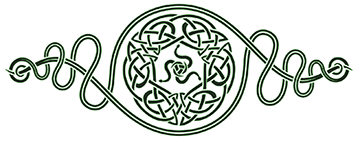
GEASA.
A remarkable practice among the Irish was the imposing of injunctions or prohibitions called geasa.
The geis (gesh), which is the singular of geasa, tied a man, hands and feet. As a matter of fact we
seldom find geis in the ancient literature; it is almost always geasa. They went in bunches; and
there was little or no protection against them.
They had a kind of preternatural sanction that made
their tyranny inexorable; and the one who violated his geasa was sure to meet with a great misfortune
of some kind. Men were often placed under geasa by people asking for some favor and appealing to them
in some such phrase as this: "I place you under heavy geasa which no true champion would break"; and
then would follow a list of things which the champion must, or must not, do till he grants the
request.
If the request was in any way just or reasonable it was considered highly dishonorable to refuse it,
irrespective altogether of the consequences that might follow the breaking of the geasa. Sometimes
these geasa were very sensible restrictions. The King of Emania was forbidden ever, when alone, to
attack a wild boar in his den. Most men would refrain from this kind of sport, even without being
under geasa, unless indeed they were armed with the high-power, rapid-firing rifles that could not
be had in those ancient times. Some of the geasa were penal and oppressive laws. It was forbidden
to the King of Ireland to let the sun-rise catch him lying in his bed at Tara.
No reasons can be assigned for some geasa. We do not understand them. Some of them are clear enough
as statutory prohibitions of the strictest obligation. On the day of the celebration of King Leary's
festival at Tara, no one in the vicinity dared light a fire till Leary's fire was burning. The dread
of sitting at table with thirteen, at the present day, is of the same nature as the terror inspired
by the geish or geasa. One superstition is no more foolish than the other. The etymology of the word
"geish" is unknown; but it is used so abundantly in our ancient literature that it is impossible not
to know precisely from the context what it means.
Text Source:
Mahon, Michael P. Ireland's Fairy Lore.
Boston: Thomas J. Flynn and Company, 1919. 205-6.
|

